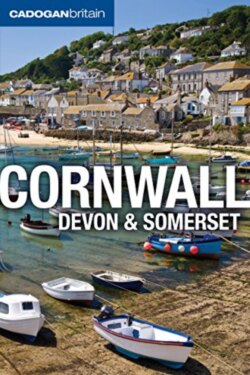Читать книгу Great Book of Spoon Carving Patterns - Joseph Fullman - Страница 33
На сайте Литреса книга снята с продажи.
Air
ОглавлениеFrom the dragonflies and butterflies of the riverbanks, to the bats of the woodland and the nesting birds of coastal cliffs, your best chance of spotting wildlife in the Southwest is to look upwards. The region’s meadows, hedgerows, riverbanks and reed beds are home to healthy populations of dragonflies and butterflies. Those you are most likely to see include the tortoiseshell, the clouded yellow, the red admiral and the painted lady. Those you are unlikely to catch a glimpse of include the Large Blue which has recently been introduced, in limited numbers, since being declared extinct in the 1970s. Hedgerows also provide nest sites for various native birds including the song thrush, blackbirds and bullfinches.
At the shore, much of the coastline is under the protection of the National Trust. Here the cliff-top grassland is home to nightingales (listen out for their distinctive whistley songs), while the cliff ledges host nesting colonies of guillemots – there’s a particularly large population near Brixham – and razorbills, found in their greatest numbers in West Cornwall. The cliff ledges also provide roosts and nesting sites for the peregrine falcon, the nation’s fastest bird of prey. Other seabirds common to the area include fulmars, kittiwakes, gannets and cormorants, as well as herring gulls, those ubiquitous seaside chip scavengers. The region’s islands provide perhaps the best environments for marine bird spotting, particularly the Isles of Scilly and Lundy Island, both of which are home to colonies of puffins.
The greatest concentrations of wildfowl are found in the estuaries of Devon and Cornwall. Numerous wading species can be spotted at the refuge at Dawlish Warren, at the mouth of the Exe Estuary, including curlew, redshank, godwits, dunlin, oystercatchers and avocet, as well as wildfowl such as brent geese, shelduck and grebes (see here).
Moving inland, birds of prey patrol the skies above areas of open farmland and countryside. Although large species, such as eagles, are long since extinct in these parts, you can still see kestrels, often spotted hovering dead still above their quarry, as well as sparrowhawks, hobbies, goshawks, and honey buzzards (who despite their name actually eat insects, typically wasps and hornets). Woodland areas often harbour barn owls and tawny owls, although as they are nocturnal, you’re more likely to hear their plaintive hoots than see them in action. More commonly spotted are the various species of bird living alongside the region’s fast-flowing rivers – in particular the Taw and the Torridge in Devon. These include the likes of kingfishers, herons, dippers and sand martins.
Perhaps the winged creature you’re most likely to spot isn’t a bird at all, but a bat. The nation has 17 species, several of which live in the Southwest, including horseshoe bats, brown long-eared bats, common pipistrelles and noctule bats. They’re best spotted near areas of woodland, or old farm buildings, come twilight as they emerge from their roosts for an evening’s hunting. If near a body of water, keep an eye out too for Daubenton’s bat, the ‘water bat’, which skims the surface looking for insects.
National Parks
The Southwest has two national parks and nine Areas of Outstanding Natural Beauty (www.aonb.org.uk), which along with a network of private refuges and stretches of National-Trust-owned coastline, represent your best opportunities for watching the diverse range of wildlife in the region:
Blackdown Hills AONB, St Ivel House, Hemyock, Cullompton, DEVON; t (01823) 680681; linda.bennett@devon.gov.uk.
Cornwall AONB (including Land’s End and the Lizard Peninsula)Fal Building, Treyew Road, Truro, Cornwall;t (01872) 323998; pwalton@cornwall.gov.uk.
Dartmoor, High Moorland Visitor Centre, Tavistock Road, Princetown, Yelverton, Devon; t (01822) 890414; www.dartmoor-npa.gov.uk.
East Devon AONB (encompassing the coastal landscape from Lyme Regis to Exmouth, the ‘Jurassic Coast’), East Devon Business Centre, Heathpark Way, Honiton, Devon; t (01404) 46663; cwoodruff@eastdevon.gov.uk
Exmoor, Dulverton National Park Cetre 7–9 Fore Street, Dulverton, West Somerset; t (01398) 323841; www.exmoor-nationalpark.gov.uk.
Isles of Scilly AONB, Old Wesleyan Chapel, Garrison Lane, St Mary’s, Isles of Scilly; t (01720) 424355; tkirk@scilly.gov.uk.
Mendip Hills AONB, Charterhouse Centre, Near Blagdon, Bristol, Avon; t (01761) 463357; sjackson@somerset.gov.uk.
North Devon AONB (encompassing the coast from Coombe Martin to the Cornish border), Bideford Station, East the Water, Bideford, Devon, t (01237) 423655; linda.blanchard@devon. gov.uk
Quantock Hills AONB, Fyne Court, Broomfield, Bridgwater, Somerset; t (01823) 451884; quantockhills@somerset.gov.uk.
South Devon AONB (encompassing the coast from Torbay to Devon), South Devon AONB Unit, Follaton House, Plymouth Road, Totnes; t (01803) 861384; robin.toogood@southdevonaonb.org.uk.
Tamar Valley AONB, Cotehele Quay, St Dominick, Saltash, Cornwall; t (01579) 351681; info@tamarvalley.org.uk
